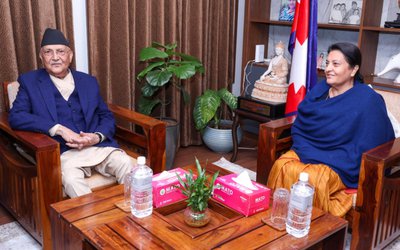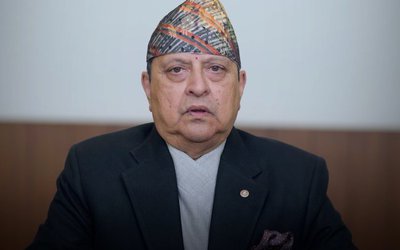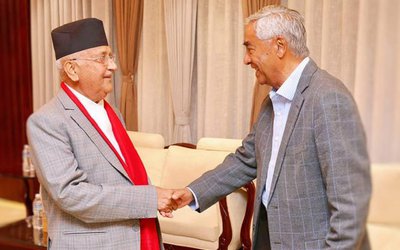After years, Nepal’s commercial banks and financial institutions are jumping to invest in hydropower projects. With the successful results from the 456 MW Upper Tamakosi and 270 MW Chilime promoted projects, Nepal’s banking sector is investing in hydropower.
Just within a couple of months, banks have already signed financial closure agreements on 358.99 MW deals. If things go normally, the plants will supply electricity to the national grid in time. At a time when the demand of energy is rising by double digits, there is a huge market potential. This is the reason bankers have shown interest to invest in the hydropower sector.
Although the recent damage of the Bhotekosi Hydropower has shown the risks involved in hydropower projects, a huge potential for profit in the growing energy market of the country has been alluring.
According to NEA’s annual report, Nepal’s demand of energy is getting higher and it is likely to double within a few years. For the commercial bankers, the energy sector offers a secure investment opportunity.
Even if dozens of projects are constructed, there will still be a huge gap in supply of electricity. According to NEA, the country has paid almost Rs. 14 billion to import electricity from India. This also shows the gap and potential.
With the delay in the construction of transmission lines, the projects may have some risks as well in the context of supplying the electricity to the national grid. Due to the lack of transmission lines, some hydropower projects are unable to evacuate the energy.
Promoted jointly by Chinese investor Sino Hydro and Nepalese company Sagarmatha Power Company, Upper Marsyangdi –A Hydro Project of 50 Megawatts has started testing the turbine installed in Lamjung. Earlier, the project had conducted tests of its embankment door and reservoir. Assistant Director Chang Fa Pin at the hydro project said that the tests of the turbine and the tunnel had so far been successful. The project, that has two turbines, plans to generate 25 megawatt power from one turbine by September 30.
However, in the lack of transmission line, the project will have to suffer. Nepal Electricity Authority is yet to complete 132 double circuit transmission lines from Lamgunj to Damauli. The situation is similar all over Nepal as the delay in the construction will largely affect the new projects.
Enthusiasm
If the events of past few months are any indication in the hydropower investment, they show that Nepalese private commercial banks are coming forth with the money required for the construction of hydropower projects in various parts of Nepal.
“It is good news to see private sector investors signing financial closure agreements with the banks. At a time when the reserves of commercial banks have increased, there is a flow of cash in the market. Hydropower sector is benefiting from this surplus,” said Khadga Bahadur Bista, chairman of Independent Power Producers Association. “If the local people don’t create obstructions, there will be more investment coming," said Bista. “NEA also needs to accelerate the process of construction of transmission lines.”
As the local banks and financial institutions are showing the interest, this has inspired the local investors to invest in the hydropower sector. “If the government promotes the current trend, more commercial banks and financial institutions will come to invest in the hydropower sector,” said Upendra Paudel, chairman of Nepal Bankers Association.
Under the lead of Nepal Investment Bank, Nepal, Hydroelectricity Investment and Development Company Ltd (HIDCL), Rastriya Banijya Bank, Agriculture Development Bank, NCC, Century Bank, Sanima, Sunrise, NIDC, Prabhu and Civil Bank signed project closing agreements with Hydro Venture Pvt. Ltd to finance 86 MW Solukhola Dudhkosi project. The consortium of the bank will invest Rs.8.65 billion. This is the largest project built in Nepal so far with local investment.
Investors are encouraged following Upper Tamakosi and Chilime, hydropower projects built from mobilizing the local resources. Upper Tamakosi 456 MW and 270 MW projects promoted by Chilime are under construction now.
Led by Nabil Bank, Global IME, Rashtirya Banijya Bank, Prabhu bank, Employment Provident Fund, HIDCL Tribeni Development Bank and Deb Development Bank signed financial closures with the investor of 49.6 MW Super Dordi Kha. This consortium will invest 5.8 billion rupees.
Similarly, Nabil led consortium of HIDCL, Nepal Investment Bank, Nepal Bank Ltd, Laxmi Bank, Siddarth and Ace Development Bank signed a financial closure with 42 MW Mistri River Hydropower project.
Led by Machhapuchre Bank, a consortium of Rashtriya Banijya Bank, Nepal Bank, NCC, Sunrise, Janta, Kumar and Civil Bank agreed to invest 38.46 MW Upper Kalgagad Project with 4.74 billion. Likewise, Everest Bank Ltd led consortium of Nabil, Global IME, Himalayan, Sunrise and HIDCL signed financial closure agreement with 30 MW Nyadi Hydropower projet. They will invest 4.40 billion rupees.
Led by Nepal Investment Bank Ltd, the consortium of Nabil, Everest, Global IME, Laxmi, Prabhu Bank and HIDCL signed financial closures with 25 MW Kabeli B 1 project. The banks will invest 2.80 billion rupees. Nepal Investment Bank Ltd led consortium of Nepal Bank Ltd, Global IME, Century, Grant, NIDC Development, Prabhu, H and B Development and NDEP Development bank signed financial closer agreements for 25 MW Upper Dordi A with investment of 2,77 billion.
Machhapuchhre led consortium of Nabil, Everest, Global IME, Nepal SBI Bank, Nepal Credit and Commerce, Kumari , Bank of Kathmandu, Siddarth and Nepal Bangladesh Bank singed financial closure with 24.1 MW Sarekhola Hydropower project. They will invest 2.94 billion rupees. Similarly, Laxmi Bank led consortium, Nepal Investment Bank Ltd, NMB, Everest, NIC Asia, Global IME, Lumbini, Century Commercial and HIDCL signed project financing agreement for 23.5 MW Solu Hydropower project. Similarly, NMB led consortium of NIC Asia, Civil, Janta, Deb Development Bank and Jyoti Development Bank signed financial closure agreement for 15.33 MW Kalgad Hydropower project.
As the areas of investment are shrinking due to political instability, the hydropower sector will be more attractive for commercial banks. “There is a conducive climate for the investment in the hydropower sector now. Along with this, the banks too have surplus money. Nepal Electricity Authority needs to accelerate the construction of transmission lines and continue to sign PPA on take and pay basis,” said Upendra Poudel, Managing director of NMB Bank and president of Bankers Association Nepal.
According a news analysis in Naya Patrika by energy reporter Sachen Gautam, local banks are now investing from 1 MW project up to 456 MW upper Tamakosi. “All the under construction projects will be completed in four years from now,” writes Gautam.
Until a few years ago, Nepal lacked the capacity to construct even a small hydropower project and needed to look for foreign support. However, the situation has changed now. Investing in 86 MW Solu Dudhkosi Project, Nepal’s financial institutions have shown that they are capable to invest in the hydropower sector.



